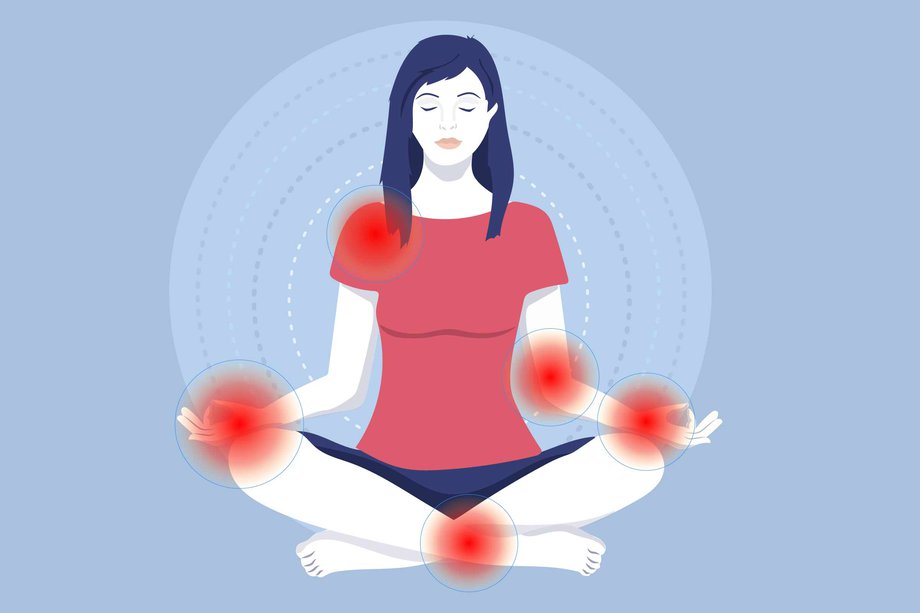How to Manage Pain Through Mindfulness and Meditation

This article explores the application of mindfulness and meditation techniques for pain management. It delves into the underlying scientific principles that support the effectiveness of these practices in alleviating pain.
By examining the mind-body connection in pain perception, it elucidates how mindfulness and meditation can modulate pain experiences.
The article further provides guidance on cultivating mindfulness in daily life and presents various meditation practices tailored for pain relief.
Additionally, it discusses strategies for integrating mindfulness and meditation into pain management routines and addresses potential challenges and resistance in establishing a consistent practice.
Key Takeaways
- Mindfulness and meditation can reduce pain intensity and improve pain-related outcomes.
- Mindfulness techniques and meditation practices help develop a non-judgmental awareness of pain.
- Mindful breathing exercises and everyday mindfulness practices can reduce stress levels and enhance self-awareness.
- Different meditation practices, such as focused attention meditation and loving-kindness meditation, can be explored for effective pain relief.
The Science Behind Mindfulness and Meditation for Pain Management
The scientific research on mindfulness and meditation for pain management has provided insights into the effectiveness and underlying mechanisms of these practices.
Mindfulness techniques involve paying attention to the present moment, without judgment or attachment. This practice helps individuals develop an awareness of their bodily sensations, including pain, and cultivate a non-reactive attitude towards it.
Meditation, on the other hand, involves focusing attention and calming the mind. Several studies have shown that both mindfulness and meditation can be beneficial in managing pain.
They can reduce the intensity and unpleasantness of pain, as well as improve pain-related outcomes such as mood, quality of life, and physical functioning.
The mechanisms behind these benefits are thought to involve changes in attentional processes, emotional regulation, and neural plasticity.
Overall, the scientific evidence supports the use of mindfulness and meditation as effective strategies for pain relief.
Understanding the Mind-Body Connection in Pain Perception
Understanding the mind-body connection in pain perception involves examining the complex interplay between psychological and physiological factors. Research has shown that the experience of pain is not solely determined by physical stimuli, but can also be influenced by cognitive and emotional processes. Mindfulness techniques and meditation have been increasingly recognized for their potential benefits in pain management. These practices involve cultivating a non-judgmental awareness of the present moment, allowing individuals to develop a different relationship with their pain. By focusing attention on the sensations and thoughts associated with pain, individuals can develop a greater understanding and acceptance of their experience. This can lead to reduced pain intensity, improved emotional well-being, and enhanced overall quality of life. The following table highlights some of the potential benefits of mindfulness techniques and meditation in pain management:
| Mindfulness Techniques | Meditation Benefits |
|---|---|
| Increased pain tolerance | Reduced anxiety and stress |
| Enhanced self-regulation | Improved emotional well-being |
| Improved quality of sleep | Increased sense of control over pain |
| Enhanced cognitive flexibility | Reduced reliance on medication |
| Improved overall quality of life | Enhanced sense of present-moment awareness |
Techniques for Cultivating Mindfulness in Daily Life
This discussion will explore techniques for cultivating mindfulness in daily life, focusing specifically on two key points: mindful breathing exercises and everyday mindfulness practices.
Mindful breathing exercises involve bringing attention to the breath as a means of anchoring oneself in the present moment.
Everyday mindfulness practices, on the other hand, involve incorporating mindfulness into various aspects of one’s daily routine, such as eating, walking, or engaging in simple tasks.
Mindful Breathing Exercises
Practicing mindful breathing exercises can help individuals manage pain by promoting relaxation and reducing stress levels. Mindful breathing techniques involve focusing one’s attention on the breath, observing its rhythm, and consciously regulating it.
By directing attention to the breath, individuals can anchor themselves in the present moment and cultivate a state of calmness. Deep breathing exercises, such as diaphragmatic breathing or paced breathing, can activate the body’s relaxation response and decrease muscle tension. This relaxation response helps to alleviate pain by reducing the release of stress hormones and promoting a sense of well-being.
Additionally, mindful breathing exercises can enhance self-awareness, allowing individuals to better understand and manage their pain sensations. Incorporating regular relaxation exercises into daily routines can provide individuals with a valuable tool for pain management.
Everyday Mindfulness Practices
Incorporating mindfulness practices into daily routines can contribute to overall well-being and enhance individuals’ ability to regulate their emotions and attention.
Mindfulness refers to the practice of intentionally bringing one’s attention to the present moment without judgment. It involves being fully aware of one’s thoughts, feelings, and bodily sensations, as well as the surrounding environment.
By incorporating everyday mindfulness techniques into daily life, individuals can experience a range of benefits. These include reduced stress levels, improved focus and concentration, enhanced self-awareness, and increased resilience to negative emotions.
Some examples of everyday mindfulness techniques that can be easily incorporated into daily routines include mindful eating, mindful walking, and mindful breathing exercises.
Exploring Different Meditation Practices for Pain Relief
Different meditation practices can be explored to find effective methods for pain relief. Various meditation techniques, such as focused attention meditation, loving-kindness meditation, and body scan meditation, have shown promising results in managing pain.
Focused attention meditation involves directing one’s attention to a specific object or sensation, helping individuals cultivate mental clarity and reduce pain perception.
Loving-kindness meditation focuses on developing feelings of compassion and empathy towards oneself and others, which can enhance pain tolerance and overall well-being.
Body scan meditation involves systematically scanning and observing sensations in the body, promoting a non-reactive and accepting attitude towards pain.
These meditation practices can be beneficial for pain relief by promoting mindfulness, which involves being fully present and non-judgmental towards one’s pain experience. Mindfulness helps individuals develop a new relationship with pain, reducing emotional reactivity and suffering associated with it.
How to Incorporate Mindfulness and Meditation Into Your Pain Management Routine
This discussion will focus on the benefits of mindfulness, techniques for incorporating meditation, and the mind-body connection in pain management.
Mindfulness has been shown to reduce stress, improve focus, and promote emotional well-being.
Techniques for incorporating meditation into a pain management routine include breath awareness, body scan meditation, and loving-kindness meditation.
The mind-body connection in pain management emphasizes the role of psychological and emotional factors in pain perception and suggests that practices like mindfulness and meditation can help regulate pain sensations.
Benefits of Mindfulness
The benefits of mindfulness in managing pain have been extensively studied and documented in various research studies. Mindfulness, a practice derived from Buddhist meditation, involves paying attention to the present moment without judgment. It has been shown to be effective in reducing pain intensity, improving physical functioning, and enhancing overall well-being.
Techniques for cultivating mindfulness include:
- Mindful breathing: Focusing on the sensation of the breath entering and leaving the body, bringing attention back to the breath whenever the mind wanders.
- Body scan meditation: Moving attention through different parts of the body, noticing any sensations or discomfort without judgment.
- Loving-kindness meditation: Cultivating feelings of compassion and kindness towards oneself and others, which can help alleviate the emotional suffering associated with pain.
- Mindful movement: Engaging in gentle movements or exercises, such as yoga or tai chi, while maintaining awareness of the body and breath.
Techniques for Incorporating Meditation
Mindfulness techniques have been shown to have numerous benefits, including reducing stress, improving focus, and enhancing overall well-being.
In addition to these individual advantages, incorporating mindfulness at work has gained attention as a means to improve productivity and job satisfaction. Research suggests that mindfulness practices, such as meditation, can enhance cognitive functions, emotional regulation, and interpersonal relationships in the workplace.
Moreover, mindfulness-based interventions have also shown promise in managing chronic pain. Mindfulness for chronic pain involves developing an awareness of bodily sensations and thoughts related to pain without judgment or reactivity. This approach can help individuals cultivate a more compassionate and accepting attitude towards their pain, ultimately reducing suffering and improving quality of life.
Mind-Body Connection in Pain Management
One approach to pain management involves developing a greater understanding of the connection between the mind and body. By utilizing mindfulness techniques and incorporating meditation, individuals can experience various benefits that contribute to the management of pain.
Increased self-awareness: Mindfulness techniques and meditation allow individuals to develop a greater sense of self-awareness, enabling them to recognize and understand the physical sensations associated with pain.
Enhanced pain tolerance: Regular practice of mindfulness and meditation has been shown to increase pain tolerance levels. This is attributed to the ability to shift attention away from pain and focus on the present moment.
Reduced stress and anxiety: Mindfulness and meditation have been found to reduce stress and anxiety levels, which are often associated with heightened pain perception. By promoting relaxation and calmness, these practices can alleviate the psychological burden of pain.
Overall, incorporating mindfulness techniques and meditation into pain management strategies can provide individuals with valuable tools to alleviate and cope with pain more effectively.
Overcoming Challenges and Resistance in Establishing a Mindfulness Practice for Pain
Overcoming challenges and resistance in establishing a mindfulness practice for pain requires a systematic and gradual approach.
Individuals experiencing chronic pain may initially resist adopting mindfulness practices due to skepticism or difficulty in changing established patterns of thinking and behavior.
To overcome this resistance, it is important to cultivate mindfulness in a way that is accessible and tailored to the individual’s unique needs and preferences.
This can be achieved by providing education and information about the benefits of mindfulness in pain management, addressing any misconceptions or concerns, and offering guidance on how to incorporate mindfulness into daily routines.
Additionally, incorporating supportive strategies such as relaxation techniques, guided meditations, and gentle movement exercises can help individuals gradually develop a sense of comfort and familiarity with mindfulness practices, enhancing their ability to effectively manage pain.
Integrating Mindfulness and Meditation With Other Pain Management Strategies
In the context of pain management, integrating mindfulness and meditation with other strategies can be beneficial for individuals experiencing chronic or acute pain. Research suggests that combining mindfulness techniques with medication can lead to improved outcomes for individuals with chronic pain.
Mindfulness-based interventions, such as mindfulness-based stress reduction (MBSR) or mindfulness-based cognitive therapy (MBCT), have shown promising results in reducing pain severity and improving overall well-being in individuals with chronic pain conditions. These interventions aim to cultivate present-moment awareness and non-judgmental acceptance of pain sensations, thereby reducing pain-related distress.
Additionally, mindfulness techniques can be used for acute pain relief, providing individuals with the ability to focus their attention on the present moment and develop a sense of control over their pain experience.
Overall, integrating mindfulness and meditation with other pain management strategies holds promise for enhancing pain relief and improving the quality of life for individuals experiencing chronic or acute pain.
Frequently Asked Questions
Are There Any Potential Side Effects or Risks Associated With Practicing Mindfulness and Meditation for Pain Management?
Potential risks associated with practicing mindfulness and meditation for pain management include: increased emotional distress, re-experiencing traumatic memories, and exacerbation of certain mental health conditions. The effectiveness of mindfulness and meditation for pain management requires further research.
How Long Does It Typically Take for Mindfulness and Meditation to Start Reducing Pain?
The average time for pain reduction through mindfulness and meditation varies depending on several factors. These factors include the individual’s level of pain, their commitment to the practice, and their ability to fully engage in the techniques.
Can Mindfulness and Meditation Be Used as a Standalone Treatment for Chronic Pain, or Do They Work Best in Combination With Other Pain Management Techniques?
Mindfulness and meditation can be used as a standalone treatment for chronic pain or in combination with other pain management techniques. Comparisons between mindfulness and medication for pain management are necessary to determine their effectiveness.
Is It Necessary to Have a Meditation Teacher or Coach to Effectively Practice Mindfulness and Meditation for Pain Relief?
The necessity of a meditation teacher or coach for effectively practicing mindfulness and meditation for pain relief is a subject of debate. Self-guided meditation has been found to be effective, but the guidance of a teacher can be beneficial for some individuals.
Are There Any Specific Mindfulness or Meditation Techniques That Are More Effective for Managing Certain Types of Pain (E.G., Chronic Back Pain, Migraines, Arthritis)?
Research suggests that specific mindfulness and meditation techniques may be more effective for managing certain types of pain, such as chronic back pain, migraines, and arthritis. These techniques offer potential benefits for pain relief.








